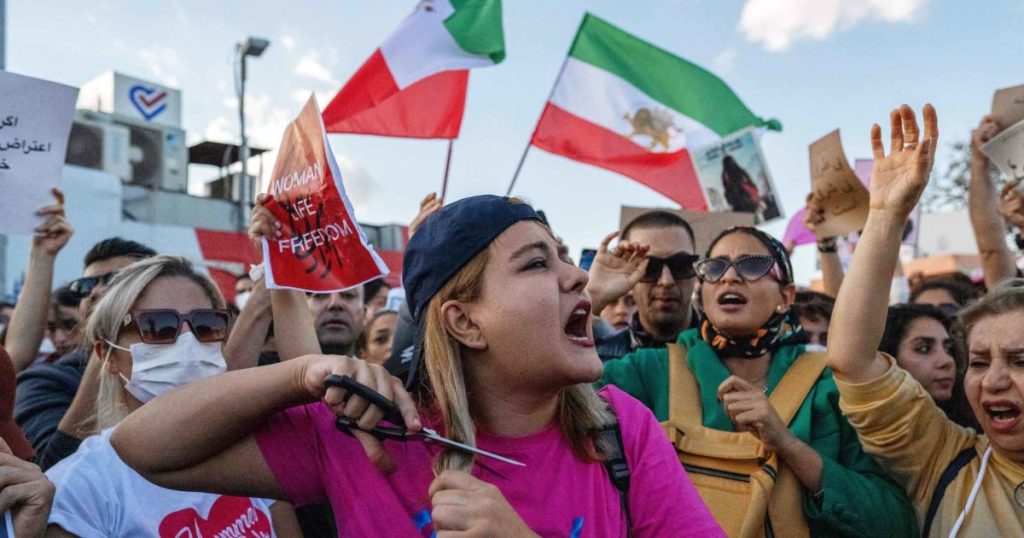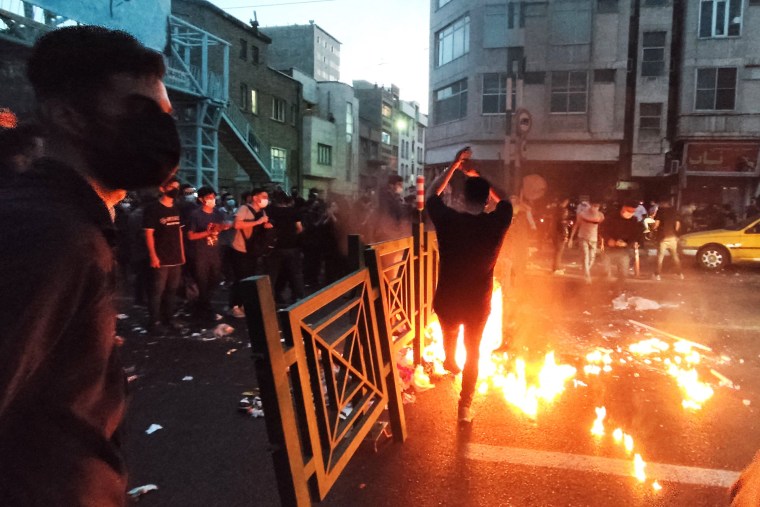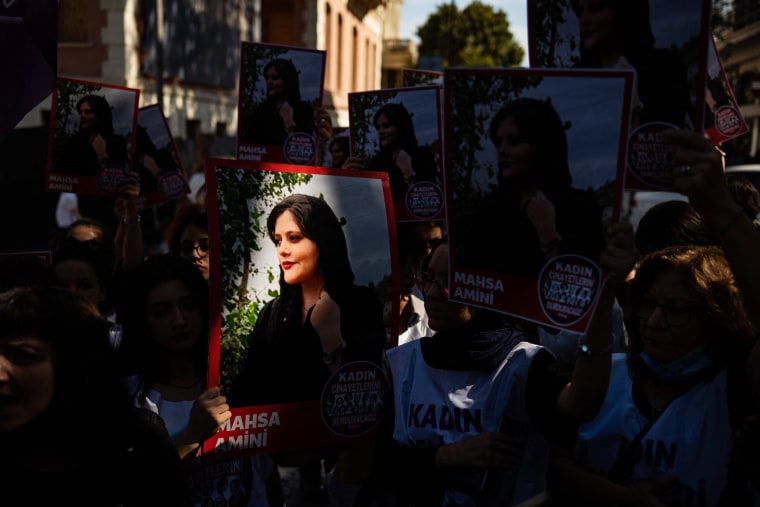
A year after her death, thousands of people across the world are expected to march in memory of Mahsa Amini — but Iranian authorities have worked to ensure that there will not be a repeat of the demonstrations that swept the country last year.
Amini’s death on Sept. 16, 2022, after being detained by the country’s morality police sparked a wave of mass unrest. The intense crackdown that followed has largely stifled the protest movement, with new detentions and draft laws being discussed in anticipation of the anniversary.
Yet the death of this 22-year-old Kurdish woman, who had been accused of not wearing her hijab properly, can still be felt in Iran, where many women now choose to walk the streets without a headscarf, defying the state, and in the dozens of foreign cities — in the U.S., Europe and beyond — that will hold demonstrations on Saturday.
A ‘symbol of every woman’s struggle’
The nationwide outpouring of anger that followed Amini’s death quickly developed into the biggest challenge to Iran’s theocratic establishment since the 1979 Islamic Revolution.
Iranian women and girls defiantly removed and sometimes burned their headscarves in public, while others around the world cut their hair in solidarity.
Although Iran has had episodes of mass protests in recent decades, the uprising after Amini’s death was shaped and dominated by women, who adopted the slogan “Woman, life, freedom.”
“She represented the grievances of every single Iranian woman who has experienced the brutal repression of the hijab over 44 years,” said Hadi Ghaemi, the executive director of the New York-based Center for Human Rights in Iran. “So in a way, she became a symbol of every woman’s struggle.”
Though the underlying human rights issues and economic troubles that drove much of the protests persist, the government’s intense crackdown has largely quashed public unrest — and the authorities want to keep it that way.

Thousands of protesters across the country were detained after Amini’s death and more than 500 are believed to have died, according to the U.N. Some were publicly executed.
Although thousands of protesters were officially pardoned, the country’s leadership has been trying to return to the status quo: reimposing strict dress codes and returning morality police to the streets. Iran’s parliament has also been looking into a new bill, which the United Nations has called a form of “gender apartheid” that could impose harsher penalties on women who refuse to wear the hijab.
In the weeks leading up to the anniversary, women’s rights activists have been detained, accused of trying to organize more protests, and the human rights group Amnesty International reported a “ruthless campaign of harassment and intimidation” against the families of the killed protesters.
Security has been stepped up in the capital, Tehran, in recent days, although there have been no signs of protests in any major cities. Social media sites remain banned in the country, and state-run media has stopped short of talking about the anniversary, but has run articles in recent weeks about what it called “lies” told by the Amini family about how Mahsa died.
Her father, Amjad, was summoned and interrogated after the family revealed plans to hold a memorial for their daughter, the Kurdistan Human Rights Network, a nonprofit that documents human rights violations in Kurdistan and Iran, said this week. NBC News has not verified the claim that he was interrogated.

In an exclusive interview with NBC News, Iranian President Ebrahim Raisi warned that those who try to create instability in the Islamic Republic would pay a “big cost.”
Asked about the government’s efforts to suppress any protest activity ahead of the anniversary, Raisi said that his government was ready to listen to genuine protesters but would not tolerate attempts to destabilize the country.
“You should be assured that the Islamic Republic of Iran has always been ready to listen to (the) words of protesters. On any issue, we are all ears,” he said through a government translator.
“And those who intend to abuse Madam Amini’s name, under this pretext to be an agent of foreigners to create this instability in the country, we know what … would happen to them,” Raisi added.
The U.S. and its allies have sanctioned senior officials in Iran for their roles in the crackdown. As he announced a new round of sanctions on Friday, President Joe Biden said that “Mahsa’s story did not end with her brutal death,” adding that she had “inspired a historic movement” whose impact has been felt across the globe.

“The regime has been preparing for this day for a very long time,” said Afshin Shahi, an associate professor in Middle East politics at England’s Keele University. “They are afraid that the protesters and the civil society may use this anniversary to rise up again.”
The country is in a “war of attrition” where people continue to defy the regime, and the government continues with its agenda, making no concessions, he added.
Arrests and executions have led to a climate of fear, but the desire for change has not gone away, Shahi said.
Despite the renewed crackdown, Ghaemi, with the Center for Human Rights in Iran, still expects “spontaneous protests” across Iran, albeit on a much lesser scale.
The sense of defiance across the country remains strong, he said, and the basic message he hears a lot from the activists is that Iran has changed, and there is no turning back.
“In that sense, the message is that this movement is well and alive,” he said. “And just because we are not on the streets does not mean that we are defeated.”
 Latest Breaking News Online News Portal
Latest Breaking News Online News Portal






